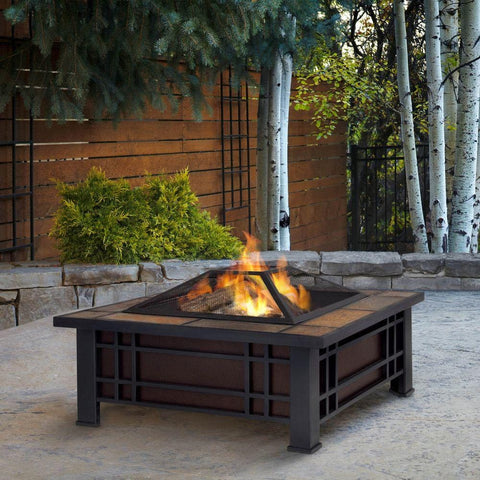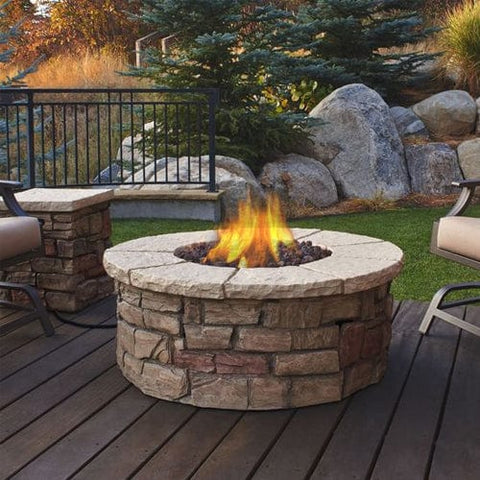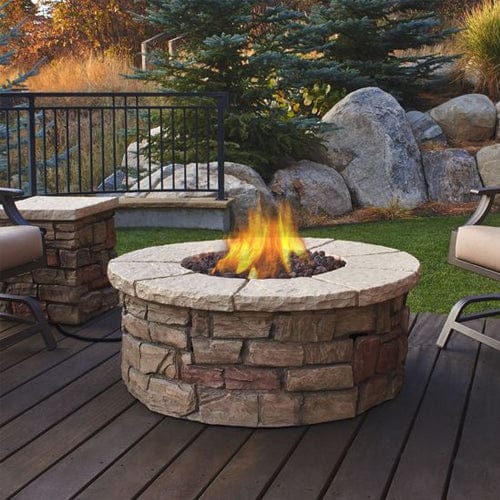Firepits have become increasingly popular in recent years, as they offer a cozy and inviting atmosphere for outdoor gatherings. However, many people are unaware of the importance of using a firepit liner. A firepit liner is a protective barrier that sits between the fire and the ground, preventing damage to the surrounding area and reducing the risk of fire spreading.
The question of whether or not a firepit needs a liner is a common one, and the answer is not always straightforward. It depends on a variety of factors, such as the type of firepit, the materials used, and local regulations. In some cases, a liner may be required by law, while in others it may be optional but highly recommended. It is important to understand the benefits of using a firepit liner and to make an informed decision based on individual circumstances.

Image Source: Houzz
Benefits of Using a Fire Pit Liner
A fire pit liner is an essential accessory for anyone who owns a fire pit. It is a protective layer that is placed at the bottom of the fire pit to prevent damage to the fire pit and the surrounding area. Here are some benefits of using a fire pit liner.
Protects Against Rust and Corrosion
Fire pits are typically made of metal, which makes them susceptible to rust and corrosion. A fire pit liner provides a barrier between the fire and the metal, preventing rust and corrosion. This means that your fire pit will last longer and require less maintenance.
Prevents Heat Damage to Surrounding Area
A firepit liner also protects the surrounding area from heat damage. Without a liner, the intense heat from the fire can cause damage to the ground or any nearby objects. A firepit liner is heat resistant and prevents heat from spreading, ensuring that the surrounding area is safe from damage.
Enhances Safety and Prevents Fire Spread
One of the most important benefits of using a fire pit liner is safety. Fire pits can be dangerous if not used properly, and a fire pit liner can help prevent accidents. If a fire gets out of control, the liner can help contain it and prevent it from spreading. Additionally, fire pit liners are fire-resistant, which means that they can withstand high temperatures without catching fire.
In conclusion, a fire pit liner is an essential accessory for anyone who owns a fire pit. It protects against rust and corrosion, prevents heat damage to the surrounding area, and enhances safety by preventing fire spread. By using a fire pit liner, you can enjoy your fire pit without worrying about damage or accidents.
Types of Fire Pit Liners
When it comes to fire pit liners, there are several options to choose from. Each type of liner has its own advantages and disadvantages, so it's important to consider your specific needs before making a decision.
Metal Liners: Steel and Stainless Steel
Metal liners, such as steel and stainless steel, are popular choices for fire pit liners due to their durability and resistance to heat. They are also relatively easy to clean and maintain. Steel liners are typically less expensive than stainless steel liners, but they may rust over time. Stainless steel liners, on the other hand, are more expensive but are resistant to rust and corrosion.
Natural Stone Liners: Granite and Fire Bricks
Natural stone liners, such as granite and fire bricks, are another option for fire pit liners. Granite is a durable and heat-resistant material that can withstand high temperatures. Fire bricks are also heat-resistant and can be used to line the bottom of the fire pit. However, natural stone liners can be more expensive than metal liners and may require professional installation.
DIY Liners: Concrete and Pavers
For those who prefer a more budget-friendly option, DIY liners made of concrete or pavers are a popular choice. Concrete is a durable material that can be molded into any shape or size, making it a versatile option for fire pit liners. Pavers are also a good option and can be arranged in a variety of patterns to create a unique look. However, DIY liners may not be as heat-resistant as metal or natural stone liners and may require more maintenance over time.
Overall, the type of fire pit liner you choose will depend on your specific needs and preferences. Whether you opt for a metal liner, natural stone liner, or DIY liner, it's important to ensure that your fire pit is safe and functional. It's also important to consider factors such as natural gas availability and local fire codes when selecting a fire pit liner.

Questions to Consider
When it comes to choosing a liner for your fire pit, there are several factors to consider. Here are a few questions to ask yourself before making a decision:
How Long Do You Plan to Use Your Fire Pit?
If you're aiming to keep your fire pit burning for long hours during frequent use, considering a high-quality liner becomes paramount. A durable liner can help protect your fire pit from the wear and tear of regular use, and can also help prevent damage from extreme heat.
On the other hand, if you only plan on using your fire pit occasionally or for a short period of time, a liner may not be as necessary. In this case, you may be able to get away with a less expensive or temporary liner option.
How Do I Want My Fire Pit to Look?
When envisioning the appearance of your fire pit, it's essential to consider the overall aesthetic you want to achieve. If you're aiming for a natural and rustic feel, opting for a fire pit without a liner can enhance the organic and earthy ambiance. The absence of a liner can allow the fire pit to blend seamlessly with its surroundings, creating a more authentic and unrefined look that complements outdoor spaces with a more traditional or nature-inspired design.
On the other hand, if your goal is to create a fire pit with a more contemporary or refined appearance, incorporating a liner can be instrumental in achieving this aesthetic. A liner can add a sleek and polished touch to the fire pit, elevating its visual appeal and seamlessly integrating it into modern outdoor settings.
By opting for a liner, you can create a fire pit that exudes a more sophisticated and stylized look, making it a striking focal point in outdoor spaces with a more contemporary or minimalist design.
What is Your Fire Pit Made Out of?
The material your fire pit is made out of can also play a role in determining whether or not you need a liner. If your fire pit is made out of a material that is prone to cracking or damage from extreme heat, a liner may be necessary to protect it.
Similarly, if your fire pit is made out of a material that is porous or absorbent, such as brick or concrete, a liner can help prevent water damage and extend the life of your fire pit.
Overall, there are several factors to consider when deciding whether or not to use a liner for your fire pit. By taking into account your usage habits, aesthetic preferences, and the materials your fire pit is made out of, you can make an informed decision that will help protect your investment for years to come.

What is the Best Fire Pit Ring Insert to Use?
While liners can enhance safety and protect the longevity of your fire pit, they may not be necessary for all setups. Assess the specific needs of your outdoor space, consider the materials used in your fire pit's construction, and weigh the benefits against potential drawbacks. Ultimately, a well-informed decision will ensure you enjoy your fire pit safely and responsibly.

